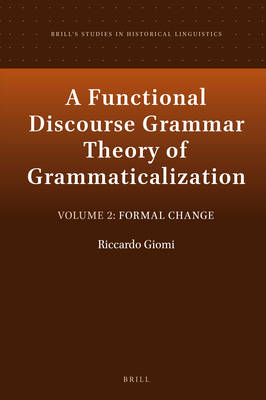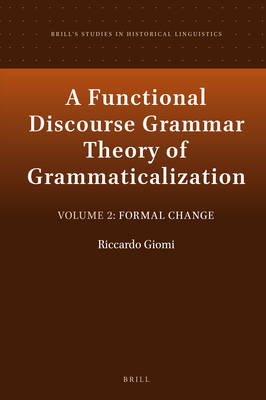
- Afhalen na 1 uur in een winkel met voorraad
- Gratis thuislevering in België vanaf € 30
- Ruim aanbod met 7 miljoen producten
- Afhalen na 1 uur in een winkel met voorraad
- Gratis thuislevering in België vanaf € 30
- Ruim aanbod met 7 miljoen producten
Zoeken
€ 238,45
+ 476 punten
Uitvoering
Omschrijving
In this volume, long-standing assumptions about the formal changes involved in grammaticalization are evaluated in the light of the striking diversity of human languages. To this end, the traditional notions of morphological coalescence, syntactic fixation and phonological erosion are reassessed with regard to their relationship with the diachronic changes affecting the function of the construction and with larger-scale typological changes that affect the language as a whole (especially, shifts in morphological type and word-order patterns). The author reaches the conclusion that suprasegmental phonological erosion and syntactic fixation (redefined in a template-based framework) are direct consequences of functional change and are therefore significant indicators of grammaticalization, whereas coalescence and segmental erosion are independently motivated by psycholinguistic, rather than strictly grammatical factors.
Specificaties
Betrokkenen
- Auteur(s):
- Uitgeverij:
Inhoud
- Aantal bladzijden:
- 252
- Taal:
- Engels
- Reeks:
- Reeksnummer:
- nr. 20
Eigenschappen
- Productcode (EAN):
- 9789004520455
- Verschijningsdatum:
- 16/02/2023
- Uitvoering:
- Hardcover
- Formaat:
- Genaaid
- Afmetingen:
- 155 mm x 235 mm

Alleen bij Standaard Boekhandel
+ 476 punten op je klantenkaart van Standaard Boekhandel
Beoordelingen
We publiceren alleen reviews die voldoen aan de voorwaarden voor reviews. Bekijk onze voorwaarden voor reviews.








